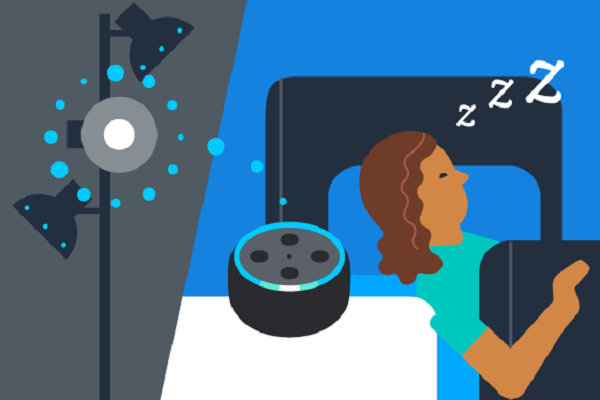Alexa-Enabled Devices Can Now Add Proactive Hunches
 Amazon has updated the Alexa Hunches feature to proactively operate smart home devices without needing to ask. The Hunches feature was first announced over a year ago and enabled Alexa to examine common behavior by users and suggest scheduling activities like turning on or off lights. With the new update, owners can authorize Alexa to start implementing Hunches and adjust smart lights, plugs, and thermostats without asking permission each time.
Amazon has updated the Alexa Hunches feature to proactively operate smart home devices without needing to ask. The Hunches feature was first announced over a year ago and enabled Alexa to examine common behavior by users and suggest scheduling activities like turning on or off lights. With the new update, owners can authorize Alexa to start implementing Hunches and adjust smart lights, plugs, and thermostats without asking permission each time.
Auto Hunch
Unlike the standard system where users command voice assistants to carry out tasks, Hunches leverages how a user behaves, when they come home, leave, sleep, awaken, and so on. Those patterns and the smart home actions tied to them, like turning on or off lights, are then collated into a potential routine that Alexa asks the user if they want to implement. So, if someone always asks Alexa to turn on lights and heat at 7 am, or when the garage door opens after 5 pm every weekday, Alexa might suggest setting those activities to automatically engage under those circumstances or at those times. The new addition to hunches allows Alexa to get permission to set those routines up without asking to do so, relying on its hunches.
“Customers can choose to have Alexa proactively control their compatible devices, such as automatically turning off their lights or adjusting their thermostat temperature when Alexa has a hunch they are away from the home or asleep,” Alexa senior product marketing manager Ben Sherman explained in a blog post. “That means customers have fewer things to think about when at home or away so they can spend their time on more meaningful things.”
Proactive Alexa
Smart device manufacturers have to enable the relevant Alexa API to allow the feature to work with their product. Not surprisingly, Amazon encourages the companies to keep Alexa abreast of when their device is active to better teach the voice assistant. For now, the option is limited to lights, switches, plugs, and thermostats, but Amazon is working on including the option for Alexa to proactively turn on a water heater’s energy-saving mode for when people are asleep or away.
“I think hunches are, in very rudimentary form, what everyone wants in a voice assistant: technology that’s personal, proactive, and truly helpful,” Alexa Champion and Reed College Professor Steven Arkonovich told Voicebot in an interview. “It’s modeling what we’d want in a human assistant.”
The newly proactive Hunches feature one facet of the improved Alexa AI Amazon announced during its September devices event. The personalization of Hunches is based on the user trusting Alexa, just as the new Teachable AI feature lets the user directly instruct Alexa about their preferences. Both tie into Alexa’s latent goal inference feature that debuted last month. Latent goal inference enables Alexa to extrapolate more of what a customer wants based on hints in other questions, like suggesting a timer when asked how long a certain dish takes to cook. How well the Hunches work, and how much people will trust Alexa to set lighting and other smart devices without asking first remains to be seen, but it could be telling that Amazon believes users trust the voice assistant enough to give it a shot. Arkonovich, who contributed to programs enabling Alexa to control Hue lights and Nest thermostats, sees Hunches as a step toward getting people to trust Alexa like a human assistant.
“Obviously, the keyword is rudimentary,” Arkonovich said. “But something like hunches is essential to really fulfill the promise of voice assistants.”
Follow @voicebotai Follow @erichschwartz
Amazon Rolls Out ‘Teachable AI’ Feature to Turn Alexa into a Student of Your Preferences








